Goat milk soap bars share incredible benefits for both sensitive and dry skin. These homemade goat milk melt and pour soap bars are simple to make and can be customized to suit any needs.
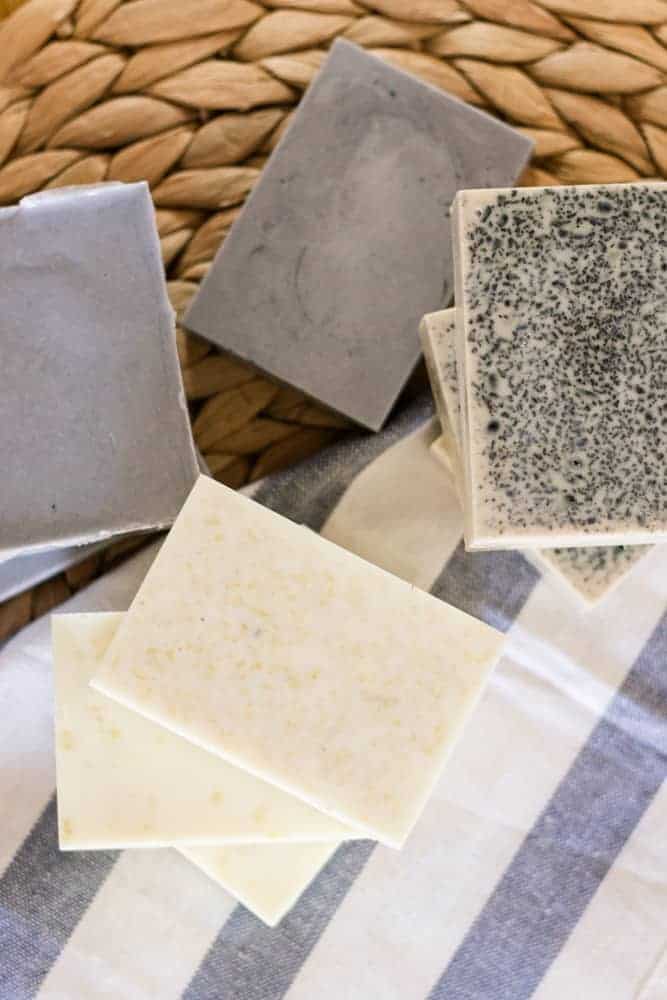
I have recently renewed my love for soap making, soap bars specifically. Making handmade soap bars has become almost therapeutic for me.
I have dabbled in both melt and pour recipes as well as a few cold process bars and love everything about both.
Using a melt and pour soap base eliminates the need to mix the lye, which can be scary; I decided to go the melt and pour route for these homemade goat milk soap bars.
One, because we are making several variations, and two, I’m not totally sure about mixing lye with goat’s milk.
Melt and pour soaps are great when it comes to adding your own finishing touches. Once the bar is melted down, you can add in essential oils for scent, dried flowers for decorations, and mica powders for color. That is the fun part, after all.
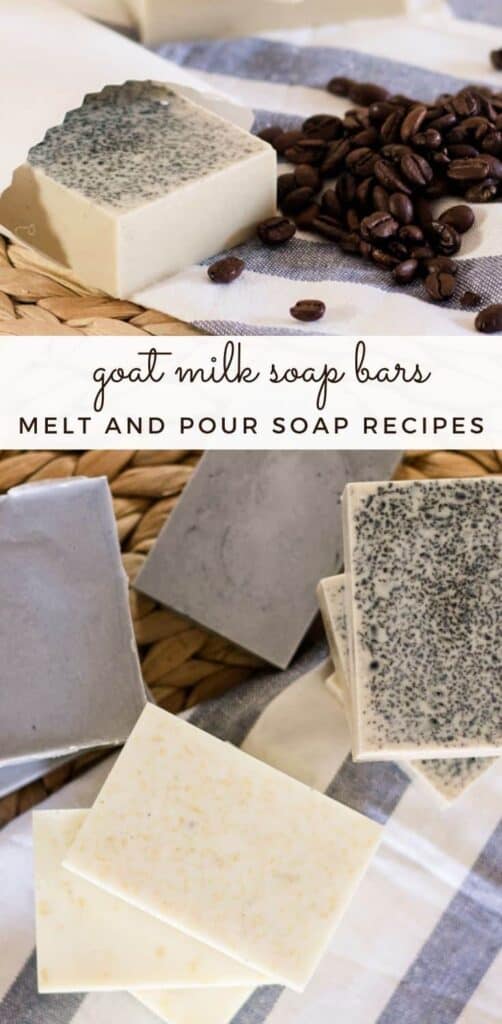
EASIEST SOAP BAR RECIPE
Melt and pour soap bases make it very easy to make your own soap. You won’t need any special equipment, lye, scales, or thermometers for these soap bars.
All you need is a melt and pour soap base and any additional additives you wish to add to your soap. I am using a goat milk melt and pour soap bar, but you can use any kind you want.
Other great options are shea butter, aloe vera, glycerin, coconut milk, or honey soap bases. Your specific skin type will help determine which soap base is best for you.
WHICH MELT AND POUR SOAP BASE IS BEST?
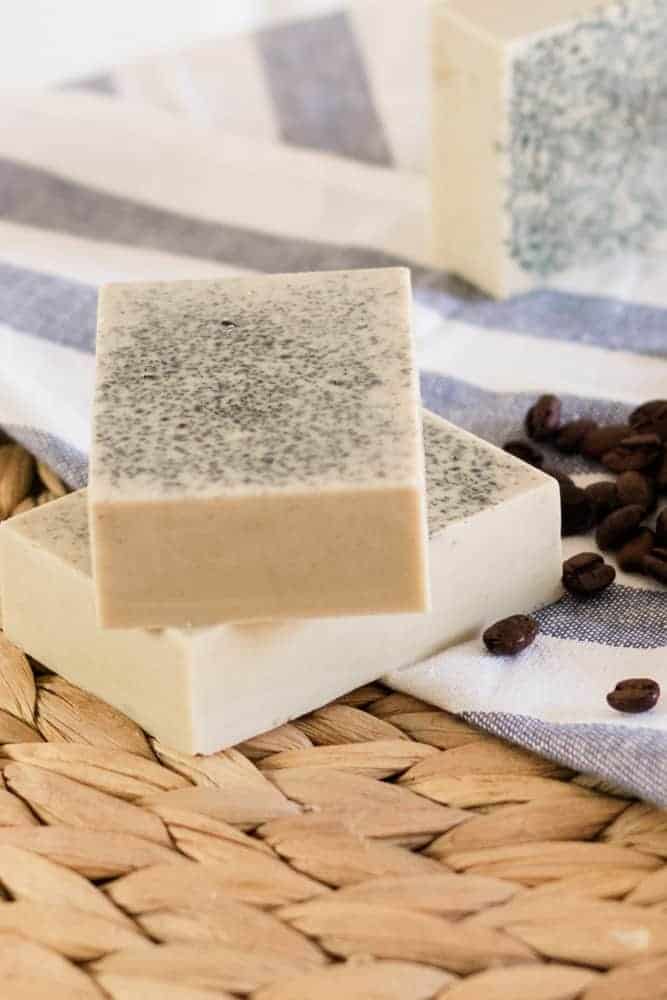
As mentioned above, you can choose any melt and pour soap base. Your skin type and what you’re going for; whether it be to moisturize, cleanse, or soothe, there is a melt and pour soap base for you.
This post contains affiliate links, which means I make a small commission at no extra cost to you. Get my full disclosure HERE.
GOAT MILK SOAP
Goat milk has fantastic benefits for the skin, especially for someone with sensitive skin.
A goat milk soap base will make a very creamy traditional soap bar.
SHEA BUTTER SOAP BASE
Shea butter soap base is very moisturizing and will not clog pores. It works as a natural sunscreen as shea butter can block UV rays.
ALOE VERA SOAP BASE
Someone with extremely dry and damaged skin would benefit from choosing an aloe vera soap base. Aloe vera is very moisturizing and can relieve dry, itchy skin. It can soothe burns, cuts, and other skin imperfections.
GLYCERIN SOAP BASE
Glycerin soap bases make a clear soap bar and are fun to use with dried flowers.
COCONUT MILK SOAP BASE
Coconut milk and coconut oil have overtaken the beauty world! Coconut is known for the amazing benefits it has on the skin. It can remove dead skin cells while moisturizing the skin, leaving it soft and smooth.
Coconut milk soap base is an excellent option for sensitive skin. Or make your own coconut milk soap bars here.
GOAT MILK MELT AND POUR SOAP BAR RECIPES
I am going to give you a few variations to try with your melt and pour goat milk soap base. Mix and match or devise your own recipe; soap making can be so much fun!
COFFEE GOAT MILK SOAP BAR
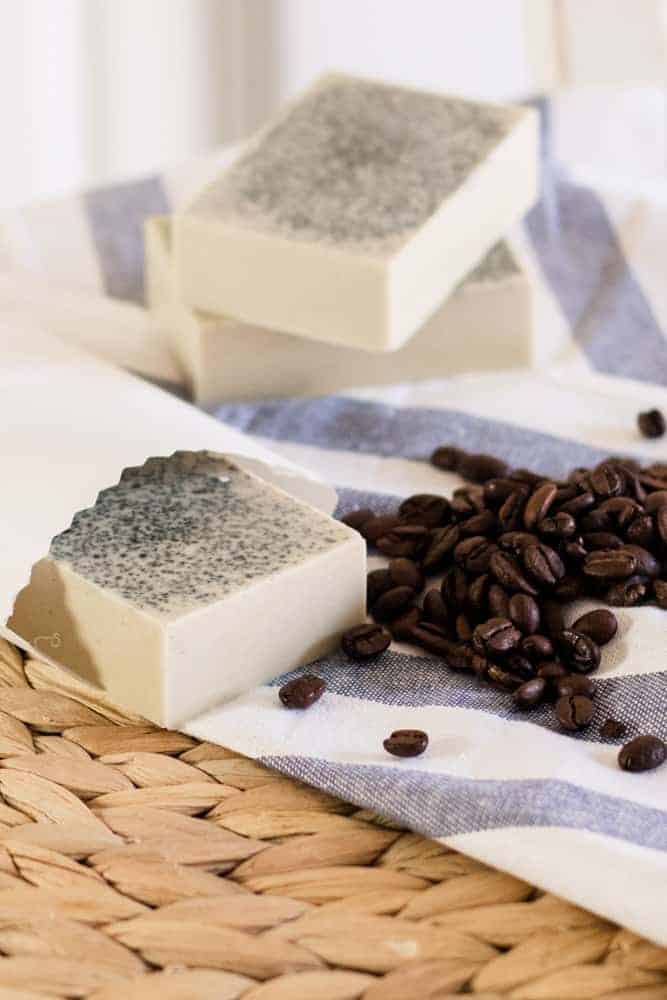
This soap bar can be used to gently exfoliate the skin. If you have sensitive skin, be sure to test this bar in a small area before using it all over.
The added vanilla and sandalwood are totally optional but gives this melt and pour soap bar a wonderful scent.
INGREDIENTS
- 2 pounds goat milk soap base
- 4 teaspoons used coffee grounds
- 1 teaspoon vanilla extract
- 10 drops sandalwood essential oil
INSTRUCTIONS
- Cut the soap base into small cubes.
- Place cubes in a double boiler. Heat over medium heat until melted.
- Remove from heat and add in the rest of the ingredients. Stir well.
- Pour into soap molds.
- Pop-out of molds once they are completely hardened, about 24 hours.
FRESH LEMON GOAT MILK SOAP BAR
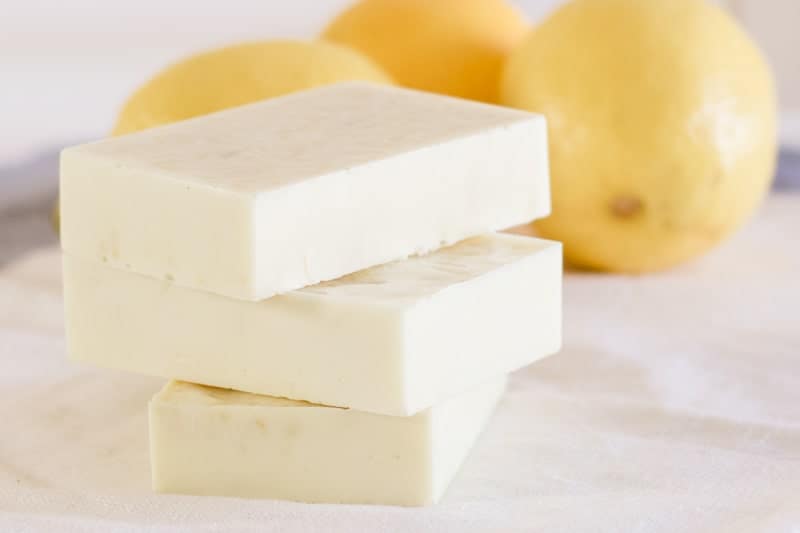
I love adding fruit zest and citrus essential oils to melt and pour soap bars. These lemon goat milk soap bars are very cleansing and purifying. The added lemon essential oil adds a very crisp and fresh scent.
INGREDIENTS
- 2 pounds goat milk soap base
- 4 teaspoons lemon zest
- 10 drops lemon essential oil
INSTRUCTIONS
- Cut the soap base into small cubes.
- Place cubes in a double boiler. Heat over medium heat until melted.
- Remove from heat and add in the rest of the ingredients. Stir well.
- Pour into soap molds.
- Pop-out of molds once they are completely hardened, about 24 hours.
NOTE: If you want the lemon zest to stay on top of the soap bars rather than mixed throughout, wait to put the zest on until the bar is partially hardened.
CHARCOAL GOAT MILK SOAP BARS
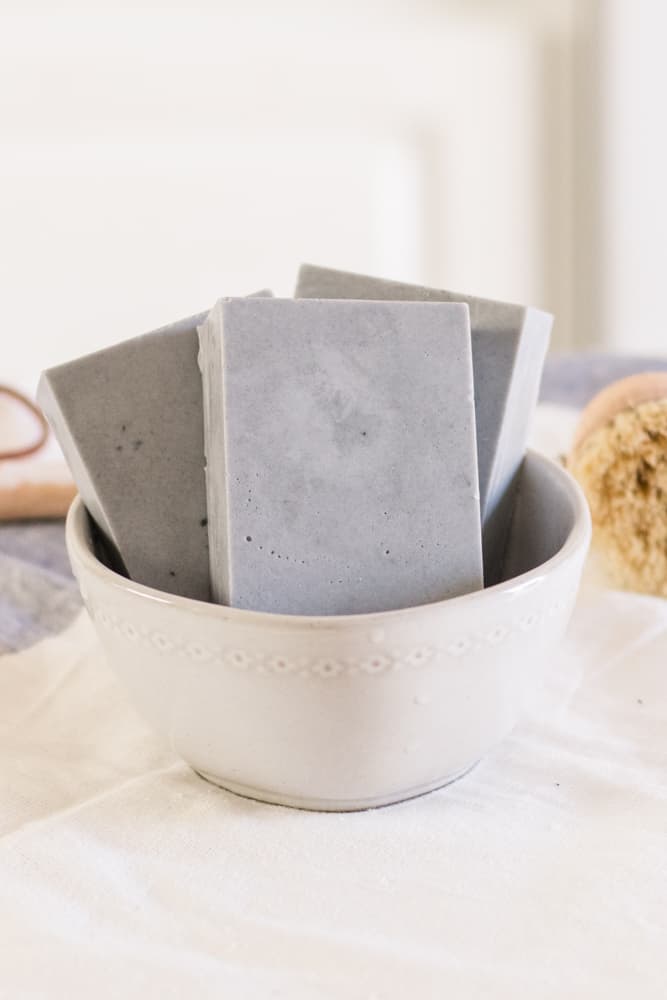
Activated charcoal is used to pull toxins and poisons out of the body. It helps to relieve rashes, bug bites, and other skin irritations. I use charcoal to make a draw salve to keep on hand for emergencies.
This soap would be perfect to use during the summertime when bug bites and poison ivy are more active.
INGREDIENTS
- 2 pounds goat milk soap base
- 4 teaspoons activated charcoal
- 10 drops cedarwood essential oil
- Cut the soap base into small cubes.
- Place cubes in a double boiler. Heat over medium heat until melted.
- Remove from heat and add in the rest of the ingredients. Stir well.
- Pour into soap molds.
- Pop-out of molds once they are completely hardened, about 24 hours.
BENEFITS OF GOAT MILK SOAP
Goat milk soap is a gentle yet effective cleaner. These goat milk soap bars can be used on the face, lather up well, and soothe the skin.
- Slows the signs of aging
- Gentle and cleansing
- Moisturizing and hydrating
- Provides a protective barrier
- Soothes sensitive skin
GOAT MILK MELT AND POUR SOAP BASE
Melt and pour soap bars are fun to make with kids because the lye is already mixed in and safe for them to use.
Lye is needed to make any soap bar, but the dirty work is already done for you when you start with a melt and pour base.
All soap bases start with lye, water, and oils. After that, the other ingredients are added to make it a particular soap bar. Common add-ins are goat milk, shea butter, and honey.
More Suggested Soap Bar Recipes to Try
- Laundry Soap Bar
- Dish Soap Bar
- Moisturizing Body Soap Bar
- Shampoo Bars
- Clear Glycerin Soap
- Shave Soap Bar
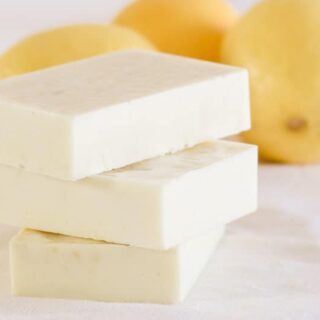
Goat Milk Soap Bars | Melt and Pour
Equipment
- Double Boiler
Ingredients
- 2 pounds goat milk soap base
- 4 teaspoons used coffee grounds
- 1 teaspoon vanilla extract
- 10 drops sandalwood essential oil
Instructions
- Cut the soap base into small cubes.
- Place cubes in a double boiler over medium heat, heat until melted.
- Remove from heat and add in the rest of the ingredients. Stir well.
- Pour into soap molds.
- Pop-out of molds once they are completely hardened, about 24 hours.
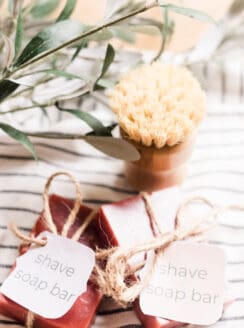
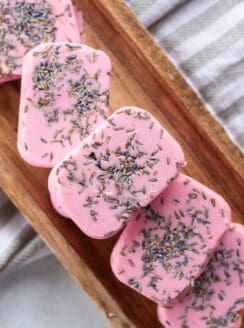
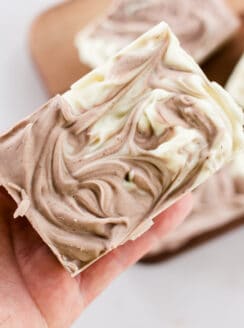
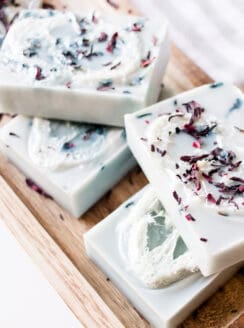
Daniella says
Can Epsom salt be added to MP goat milk soap bases? If so, how much per pound? Thank you!